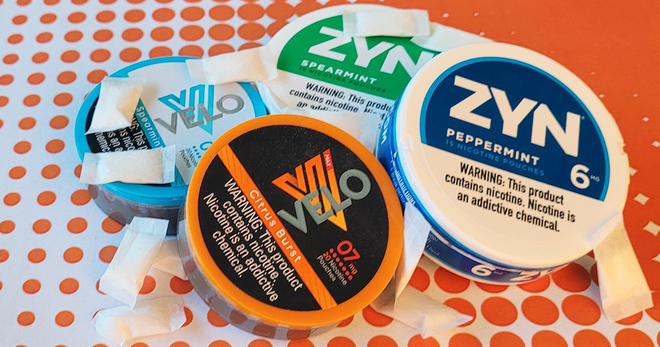How are schools responding to JUUL and the youth e-cigarette epidemic?
What are schools doing to address the use of JUUL, the most popular e-cigarette in the country?
JUUL, which accounted for 76 percent of the e-cigarette market at the end of 2018, is driving an epidemic of e-cigarette use among young people. Data from the National Youth Tobacco Survey show current e-cigarette use among high schoolers reached more than 20 percent in 2018, a 78 percent increase in one year. Its popularity among young people continues to grow, with one Truth Initiative estimate suggesting eight times as many 15- to 17-year-olds tried JUUL in October 2018, compared with August 2017.
To find out how familiar schools are with the surge in e-cigarette use and how they are responding, Truth Initiative researchers surveyed more than 1,500 teachers and administrators of middle and high schools across the U.S.
Do teachers and administrators know about JUUL?
Despite rising teen use, less than half (47 percent) of high school and middle school teachers and administrators recognized a photo of a JUUL device. More than one-third (35 percent) mistook it for a USB drive, pencil lead container or other object, and 18 percent could not identify the device at all.
While more recognized a JUUL flavor pod (65 percent) and the JUUL name (68 percent), just 40 percent of middle and high school staff correctly identified the device, flavor pods, and reported they had heard of a product called JUUL.
After researchers explained what JUUL was, less than half of school staff members reported that they had seen or heard of students using the product, which is not surprising given its easily-concealed design. In total, 48 percent of high school staff reported that they had observed or heard of students using JUUL in the bathroom, and 40 percent had seen or heard of students using it behind or beside the building or in the parking lot (39 percent). Rates were lower in middle school, but still alarming, with 32 percent of middle school staff reporting seeing or hearing of students using JUUL in the bathroom and 24 percent using it behind or beside the building.
Despite their somewhat limited familiarity with JUUL and its use in their school, the overwhelming majority of school staff reported concern about e-cigarettes. More than 80 percent of teachers and administrators reported that they were somewhat or very concerned about e-cigarette use by students at school. Concern was slightly higher among high school staff (88 percent) than middle school staff (77 percent).
Keeping JUUL out of school
More than 40 percent of all teachers and administrators reported that their school uses camera surveillance near the school’s restroom, almost half (46 percent) reported camera surveillance elsewhere in the school, and 23 percent reported using assigned teachers for restroom surveillance. Nine percent reported removing restroom doors to prevent JUUL use. Most school staff (83 percent) also reported that their school had adopted a formal policy explicitly prohibiting e-cigarette use, with nearly half of those policies (44 percent) specifically naming JUUL.

While surveyed staff expressed concern about e-cigarettes, more than one-third (34 percent) reported no formal communication from the school to students’ parents about e-cigarette use at school. Just over 40 percent reported that their school sent a letter or email home, and less than a third reported phone calls (28 percent), one-on-one meetings (22 percent) and PTA/town hall meetings (22 percent) as forms of communication with parents.
Many of the middle and high school teachers and administrators surveyed also displayed a lack of knowledge about the relative harms and addictive properties of e-cigarettes, including JUUL. Most respondents believed e-cigarettes to be equally or more harmful (82 percent) and equally or more addictive (90 percent) as cigarettes, while 18 percent perceived e-cigarettes as less harmful than cigarettes and 10 percent believed e-cigarettes were less addictive than cigarettes. Although e-cigarettes may not be as harmful as combustible cigarettes to adult smokers, their nicotine content — particularly that of JUUL — can make them extremely addictive.
Nicotine is unquestionably harmful to developing brains: younger users are more likely to become addicted, have more difficulty quitting and may be at higher risk for addiction to other substances in the future. Yet more than 60 percent of young adult JUUL users are unaware that the product always contains nicotine, according to a previous Truth Initiative study.
Truth Initiative has repeatedly called for action to address the youth e-cigarette epidemic, including urging the Food and Drug Administration to restrict marketing practices that attract youth, end online sales, eliminate the panoply of youth-appealing flavors and fully regulate these products by requiring manufacturers to submit evidence that they benefit public health.
To learn more about JUUL and its rise, read the Truth Initiative report “Behind the Explosive Growth of JUUL.” To learn about how to quit e-cigarettes, or how to help someone quit, visit "Quitting E-cigarettes."
More in emerging tobacco products
Want support quitting? Join EX Program
By clicking JOIN, you agree to the Terms, Text Message Terms and Privacy Policy.
Msg&Data rates may apply; msgs are automated.



